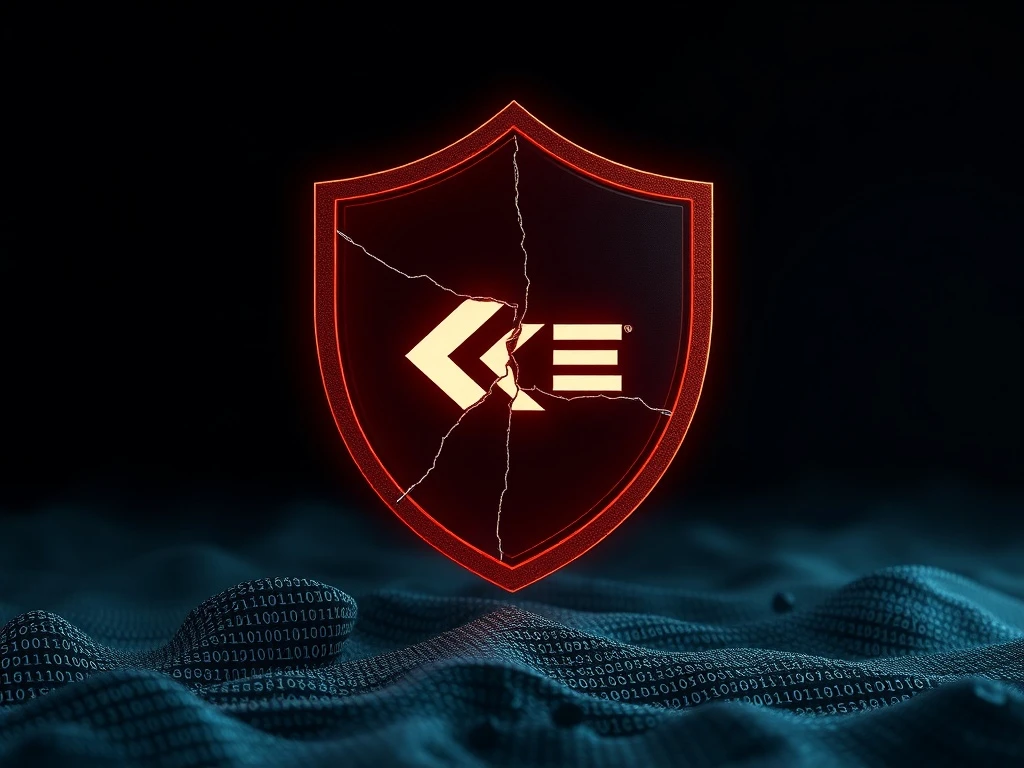GMX Suffers Devastating $40 Million Exploit: A Critical Blow to DeFi Security

The decentralized finance (DeFi) landscape has once again been shaken, this time by a significant GMX exploit. A staggering $40 million in funds vanished from the GMX V1 protocol, forcing an immediate halt to trading and GLP token minting. This incident serves as a stark reminder of the persistent security challenges facing the rapidly evolving crypto industry.
Understanding the GMX V1 Exploit: A Deep Dive
On Wednesday, the GMX V1 decentralized exchange experienced a critical exploit that led to the theft of approximately $40 million. The funds were siphoned from a liquidity pool on the Arbitrum network, which serves as the backbone for GMX V1. This particular pool provides liquidity providers with a basket of digital assets, including Bitcoin (BTC), Ether (ETH), and various stablecoins. The protocol swiftly responded by pausing trading on GMX V1 and temporarily suspending the minting and redemption of GLP tokens across both Arbitrum and the Avalanche layer-1 network. Users were urged to disable leverage and adjust settings to prevent further GLP minting.
What Happened with GMX V1?
- Targeted Pool: A liquidity pool on GMX V1 (Arbitrum) holding BTC, ETH, and stablecoins.
- Funds Lost: Approximately $40 million transferred to an unknown wallet.
- Immediate Action: GMX halted trading on V1 and suspended GLP token minting/redemption.
- Root Cause: Blockchain security firm SlowMist identified a design flaw allowing manipulation of the GLP token price via total assets under management calculation.
- Unaffected Protocol: Importantly, GMX V2, its markets, liquidity pools, and the GMX token itself remain unaffected by this specific vulnerability.
The Broader Impact of Crypto Hacks on Decentralized Finance
The GMX exploit is not an isolated event but rather another entry in a concerning trend of large-scale crypto hacks plaguing the digital asset space in 2025. These cybersecurity incidents continue to be a major pain point, impacting both centralized platforms and decentralized exchanges alike. The cumulative losses from such attacks have reached billions of dollars, creating a climate of fear that can deter new participants from engaging with crypto.
Recent Notable Crypto Hacks in 2025:
| Incident | Date | Estimated Loss | Details |
|---|---|---|---|
| Bybit Hack | February 2025 | ~$1.4 Billion | Significant funds stolen, contributing to major losses in H1 2025. |
| Nobitex Cyberattack | June 2025 | ~$81 Million | Iranian exchange targeted by pro-Israeli hacker group, forcing service pause. |
| GMX V1 Exploit | Wednesday (recent) | ~$40 Million | DeFi protocol exploit due to design flaw in GLP token price calculation. |
| North Korea State-Affiliated Hacks | Ongoing | Undisclosed (Multiple) | US Treasury sanctions groups like Song Kum Hyok for infiltrating crypto and defense firms. |
Fortifying DeFi Security: Lessons Learned from GMX
The frequency and scale of these incidents underscore the critical need for enhanced DeFi security. While decentralization offers many advantages, it also presents unique challenges for safeguarding user funds. The GMX V1 incident, attributed to a design flaw, highlights the importance of rigorous code audits, bug bounties, and continuous security assessments. Protocols must prioritize robust architecture and thorough testing to identify and mitigate vulnerabilities before they can be exploited by sophisticated threat actors.
Key Takeaways for DeFi Security:
- Rigorous Audits: Regular and comprehensive security audits by multiple reputable firms are essential.
- Bug Bounty Programs: Incentivizing white-hat hackers to find and report vulnerabilities can prevent exploits.
- Transparent Communication: Protocols should communicate promptly and clearly with users during and after security incidents.
- Community Vigilance: Empowering users with information and tools to understand risks and protect themselves.
- Layered Security: Implementing multiple layers of security, from smart contract design to operational procedures.
The Role of the GLP Token in the Vulnerability
Central to the GMX exploit was the manipulation of the GLP token price. GLP (GMX Liquidity Provider) tokens represent a share of the GMX V1 liquidity pool. The vulnerability stemmed from a design flaw that allowed attackers to manipulate how the GLP token’s price was calculated, specifically through the total assets under management. By exploiting this flaw, hackers could effectively inflate the perceived value of their holdings, enabling them to withdraw more assets than they had legitimately contributed. This specific attack vector emphasizes that even seemingly minor design intricacies can become major security liabilities.
Navigating the Aftermath: What’s Next for GMX?
In the wake of the exploit, the GMX team is focused on understanding the full scope of the attack and implementing measures to prevent future occurrences. While the immediate priority was to halt the exploit and protect remaining funds, the long-term focus will be on a thorough post-mortem analysis, potential compensation strategies, and further strengthening the protocol’s security framework. The clear distinction made between GMX V1 and the unaffected GMX V2 is crucial for maintaining user confidence in the protocol’s newer iterations and future development.
The GMX V1 exploit is a painful reminder that the digital frontier of finance, while promising, remains fraught with risk. For the crypto industry to achieve broader adoption, continuously enhancing security measures and fostering a resilient ecosystem capable of withstanding sophisticated attacks is paramount. The incident highlights the ongoing battle against cybercrime and the collective responsibility of developers, users, and security firms to build a safer DeFi future.









